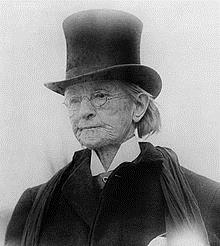Today we have the pleasure of getting to know
Mary Edwards Walker, MD
who fought fo r women to be respected as physicians, and who served in the Civil War, and won the Medal of Honor (the only woman to have done so yet)
r women to be respected as physicians, and who served in the Civil War, and won the Medal of Honor (the only woman to have done so yet)
Mary’s strong sense of self began with her parents, Alvah and Vesta. Both determined for their daughter to be as well educated as their son, they founded the first free school house in Oswego, NY in the late 1830s. After primary school, Mary and her two sisters attended Falley Seminary in Fulton, NY where modern social reform in gender roles, education and hygiene. This education instilled in her the fortitude to challenge traditional feminine standards of society.
Mary showed an interest in medicine at an early age, constantly reading over her father’s medical texts and as she grew into a young woman, she was able to pay her way through Syracuse Medical College by having taught at a school in Minetto, NY. She graduated from Syracuse with honors as a medical doctor as the only woman in her class.
Dr. Walker lived her life working to break down gender norms, especially in the medical profession where women, at the time, were generally less respected than males. She perpetually would wear skirts with trousers underneath and while this fashion decision drew its criticisms, she later wrote for a women’s journal. This article exposed her as a strong feminist and she quickly popular figure among women and female physicians.
Mary was volunteering for the Union Army at the beginning of the Civil War. She was allowed to only as a nurse. Eventually, Walker was able to serve as the first female surgeon of the Union Army. In 1864, Dr. Walker was captured by Confederate troops for around 5 months when she was then exchanged for a Confederate surgeon from Tennessee.
Dr. Walker became a writer and lecturer on issues such as health care, temperance, women’s rights and dress reform. She was strong in the movement for female voting rights. Her passing in 1919 came one year before women’s right to vote was granted. She is buried in her hometown of Oswego, NY in a black suit.
